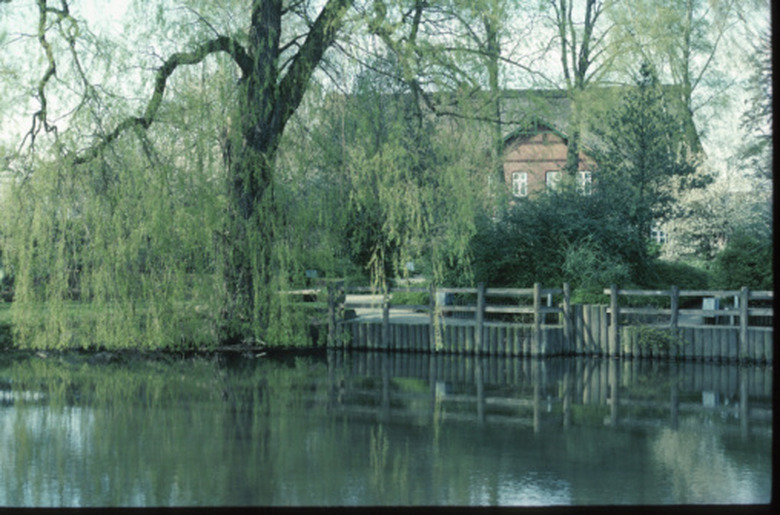Black Leaf Spot On A Weeping Willow Tree
Willow trees are prone to many diseases, but black leaf spot is generally one of the more harmless ones. Black leaf spot disease is typically caused by a fungus that overwinters in leaf debris on the ground, but may also survive in buds or bark. Damage is usually aesthetic only, unless the symptoms begin early in the season.
Identification
Black leaf spots on willows are caused by several different fungi. Ascochyta causes small, irregular gray target-like spots. Ciborinia causes brown, irregular spots that later turn black. The centers may fall out leaving ragged holes. Marssonina causes yellow, brown or black spots. The spots may drop out or have a yellow margin. Marssonina is one of the more serious fungi because it can cause premature defoliation. Phyllosticta causes brown to black irregular spots, occasionally marked with black specks. Rhytisma causes yellow green, irregular spots that change to shiny black. The spots are often raised, thickened or wrinkled.
Damage
Black leaf spots typically appear in late summer and rarely cause more than aesthetic damage. However, when the leaf spots appear early, they may cause premature defoliation. The willow's health may be compromised if defoliation occurs over two or three seasons, increasing the tree's vulnerability to other disease and insect problems. Black leaf spots are most damaging during an extended rainy period in late spring to early summer.
Prevention
Plant the willow tree in full sun in moist soil. Fertilize the tree in spring with a balanced fertilizer and prune it annually to remove weak or crowded limbs. Keeping the willow healthy helps it withstand fungal diseases, such as black leaf spot. Rake up and remove dead leaves and limbs throughout the year.
Treatment
Black leaf spots rarely need treatment, but if the tree was defoliated the previous summer due to black leaf spot, consider a fungicide treatment. Contact a county extension office for fungicides effective in your area. Spray the tree when the buds first start to open for best control. Make two or three more applications seven to 21 days apart. Fungicides are not effective once the damage is apparent.
